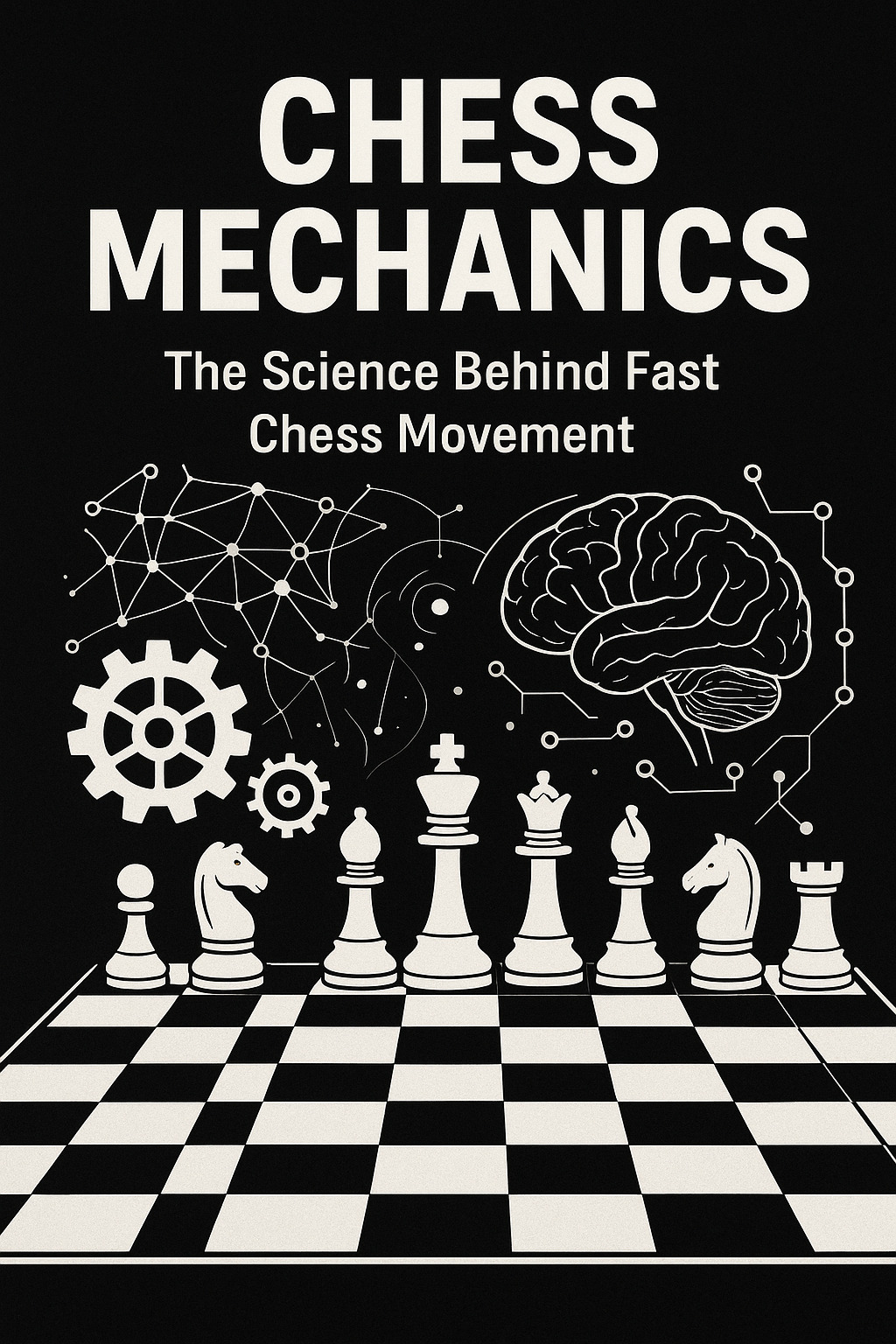Chess Mechanics: The Science Behind Fast Chess Movement

Chess Mechanics: The Science Behind Fast Chess Movement
Understanding the scientific principles behind fast chess movement can significantly improve your training effectiveness and overall performance. This guide explores the cognitive and physiological aspects of rapid chess play.
The Science of Chess Movement
Cognitive Processes in Fast Chess
1. Pattern Recognition
- Visual Processing: How the brain processes chess positions
- Neural Networks: Pattern recognition in the brain
- Memory Formation: How chess patterns are stored
2. Decision Making
- Intuitive vs. Analytical: Two systems of thinking
- Time Pressure Effects: How time affects decision quality
- Risk Assessment: Evaluating position safety quickly
3. Working Memory
- Position Storage: Keeping track of piece positions
- Calculation Depth: How many moves ahead to calculate
- Memory Limitations: Cognitive constraints in chess
Muscle Memory in Chess
Physical Aspects
- Hand-Eye Coordination: Moving pieces accurately
- Muscle Memory: Automatic piece movement
- Spatial Awareness: Understanding board geometry
Training Muscle Memory
- Repetitive Practice: Consistent piece movement
- Visual Cues: Recognizing piece patterns
- Automatic Responses: Developing quick reactions
Pattern Recognition Science
How Pattern Recognition Works
- Chunking: Grouping related information
- Template Matching: Recognizing familiar patterns
- Associative Memory: Linking patterns to responses
Training Pattern Recognition
- Exposure: Study many positions
- Repetition: Practice common patterns
- Variation: Learn pattern variations
- Application: Use patterns in games
Cognitive Load Theory
Mental Effort in Chess
- Intrinsic Load: Complexity of chess positions
- Extraneous Load: Distractions and noise
- Germane Load: Learning and improvement
Managing Cognitive Load
- Simplify Positions: Reduce complexity
- Focus Training: Eliminate distractions
- Structured Learning: Organize information
Neuroscience of Chess
Brain Regions Involved
- Prefrontal Cortex: Planning and decision making
- Parietal Lobe: Spatial processing
- Temporal Lobe: Pattern recognition
- Cerebellum: Motor coordination
Neural Plasticity
- Synaptic Strengthening: How practice improves performance
- Neural Pathways: Formation of chess-specific connections
- Brain Adaptation: How the brain adapts to chess
Speed of Processing
Information Processing Speed
- Perceptual Speed: How quickly you see patterns
- Decision Speed: How quickly you make choices
- Execution Speed: How quickly you move pieces
Factors Affecting Speed
- Experience: More experience = faster processing
- Practice: Regular practice improves speed
- Age: Younger players often process faster
- Training: Specific training improves speed
Memory Systems in Chess
Short-term Memory
- Position Memory: Remembering current position
- Move Memory: Keeping track of moves
- Pattern Memory: Recognizing tactical patterns
Long-term Memory
- Opening Knowledge: Stored opening lines
- Endgame Patterns: Memorized endgame positions
- Tactical Patterns: Stored tactical motifs
Working Memory
- Calculation: Working through variations
- Planning: Developing strategies
- Evaluation: Assessing positions
Training the Chess Brain
Cognitive Training Methods
- Tactical Puzzles: Improve pattern recognition
- Blindfold Chess: Enhance visualization
- Speed Chess: Develop quick thinking
- Memory Training: Improve recall ability
Physical Training
- Eye Exercises: Improve visual processing
- Hand Exercises: Enhance motor skills
- Posture Training: Maintain focus
- Breathing Exercises: Reduce stress
The Role of Intuition
Intuitive vs. Analytical Thinking
- System 1: Fast, intuitive, automatic
- System 2: Slow, analytical, deliberate
- Balance: Using both systems effectively
Developing Intuition
- Pattern Exposure: Study many positions
- Practice: Regular game play
- Analysis: Review and learn from games
- Trust: Confidence in intuitive decisions
Time Pressure Psychology
Stress Response
- Adrenaline: Heightened awareness
- Cortisol: Stress hormone effects
- Fight or Flight: Natural stress response
Managing Time Pressure
- Breathing Techniques: Stay calm under pressure
- Focus Training: Maintain concentration
- Confidence Building: Trust your abilities
- Practice: Regular time pressure training
Individual Differences
Cognitive Styles
- Visual vs. Verbal: Different processing styles
- Analytical vs. Intuitive: Different thinking approaches
- Fast vs. Slow: Different processing speeds
Adapting Training
- Identify Style: Understand your cognitive style
- Customize Training: Adapt methods to your style
- Balance Development: Work on weaknesses
- Leverage Strengths: Use your natural abilities
Technology and Chess Training
Digital Tools
- Chess Engines: Analysis and training
- Online Platforms: Practice and competition
- Training Apps: Structured learning
- Brain Training: Cognitive enhancement
Future Developments
- AI Integration: Artificial intelligence in training
- Virtual Reality: Immersive chess training
- Brain-Computer Interfaces: Direct brain training
- Personalized Learning: Customized training programs
Conclusion
Understanding the science behind chess movement can revolutionize your training approach. By applying cognitive science principles, you can train more effectively and improve faster.
Remember: Chess is both an art and a science. Use scientific principles to guide your training while maintaining the creative and intuitive aspects of the game.
Apply the Science in Practice
Understanding chess mechanics is one thing - applying them is another. Our Chess Speed Trainer lets you put these scientific principles into practice with:
- Pattern recognition training based on cognitive science
- Speed development using proven neurological methods
- Memory enhancement through spaced repetition
- Performance measurement with scientific accuracy
Turn theory into results. Start your scientifically-backed chess training today!
Ready to Practice?
Put your knowledge to the test with our Chess Speed Trainer. Practice the exact techniques described in this article with real-time feedback and progress tracking.
Start Training NowChess Speed Team
Chess training expert and content creator